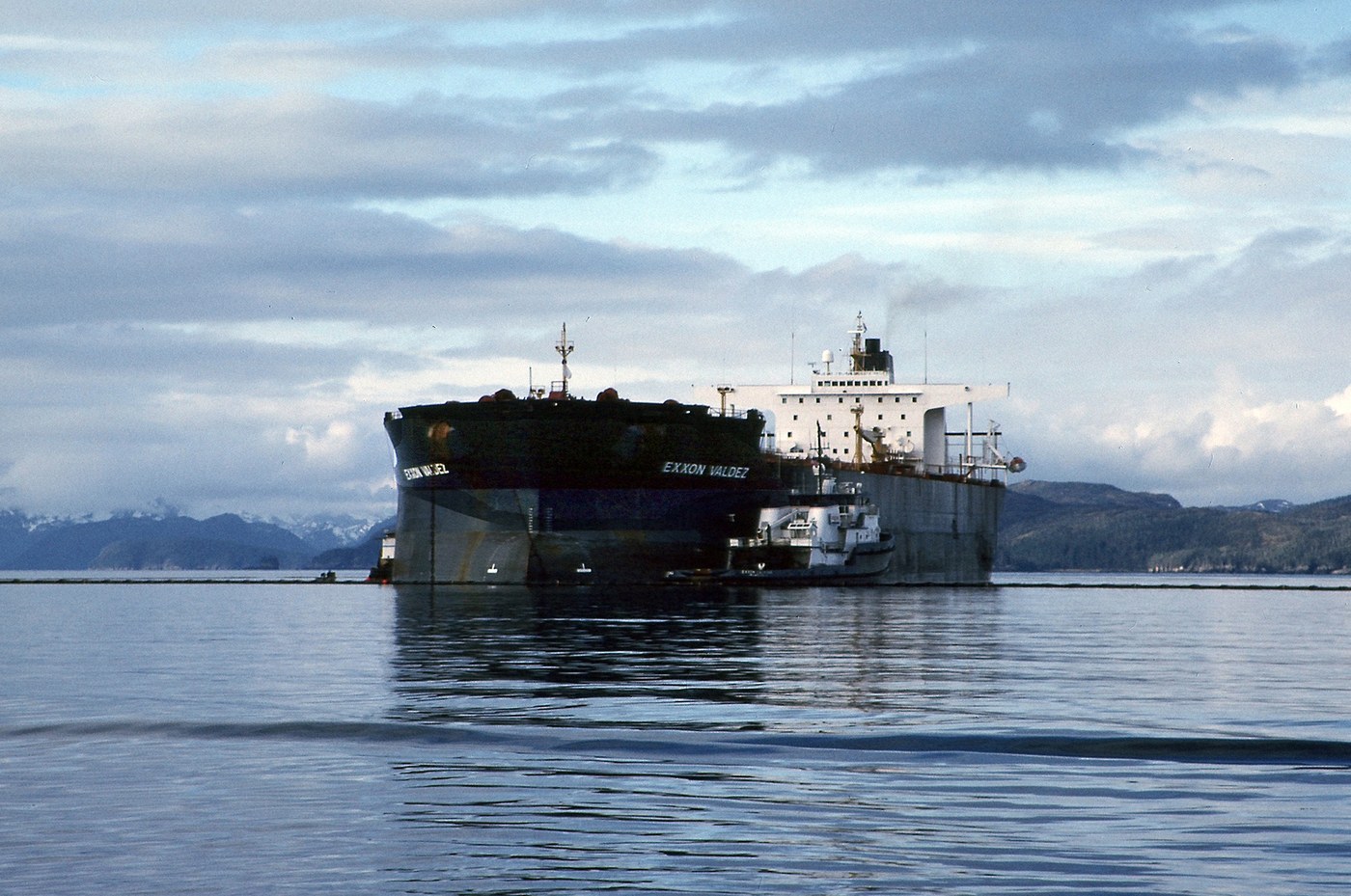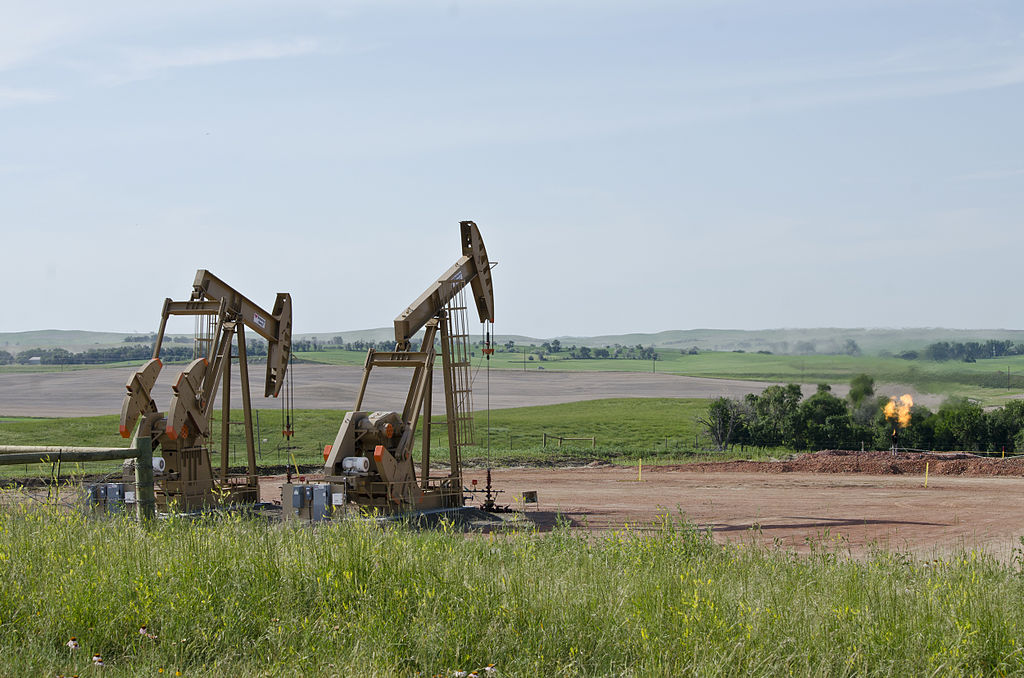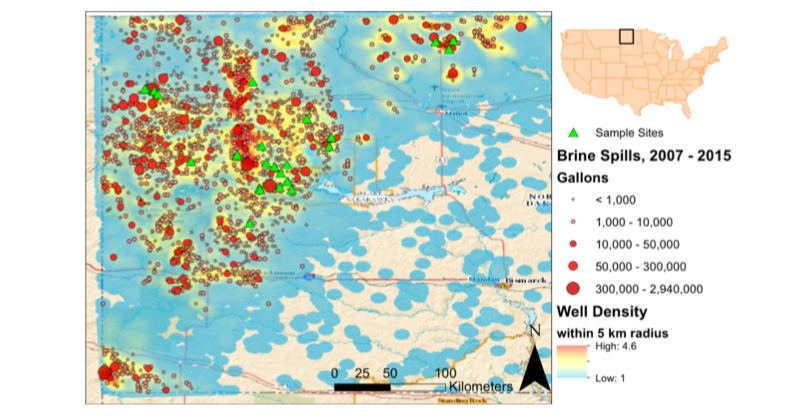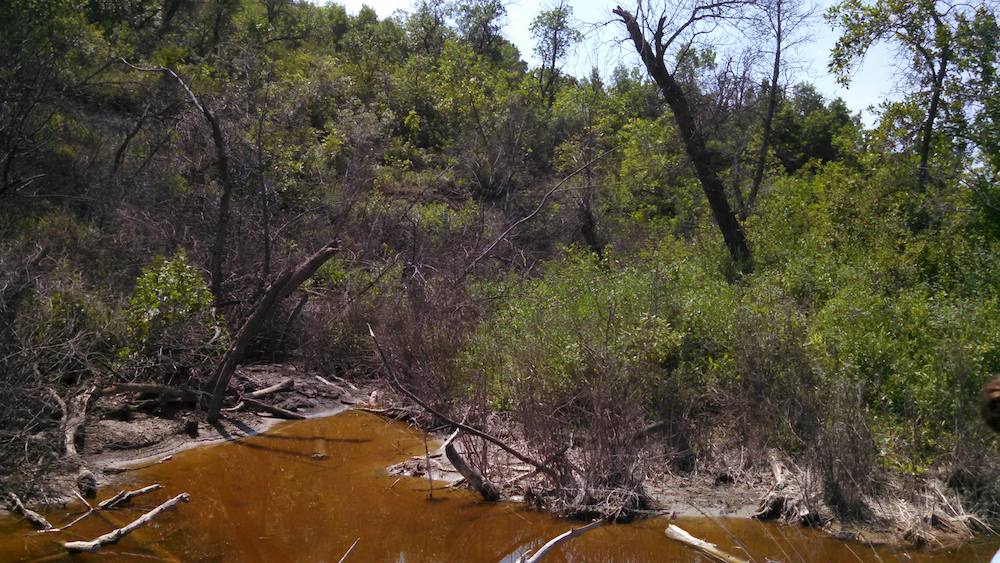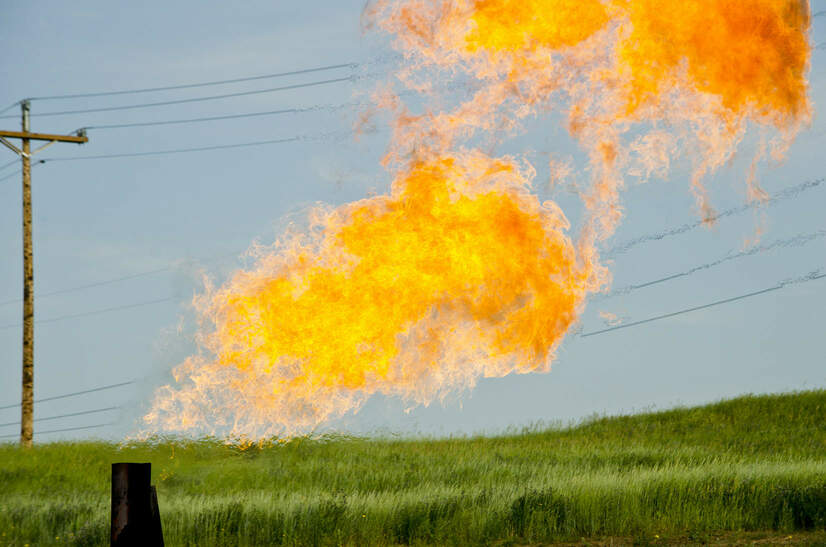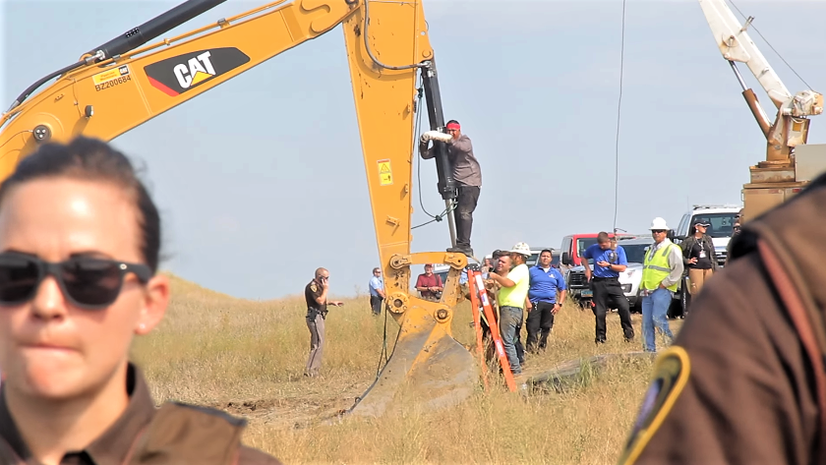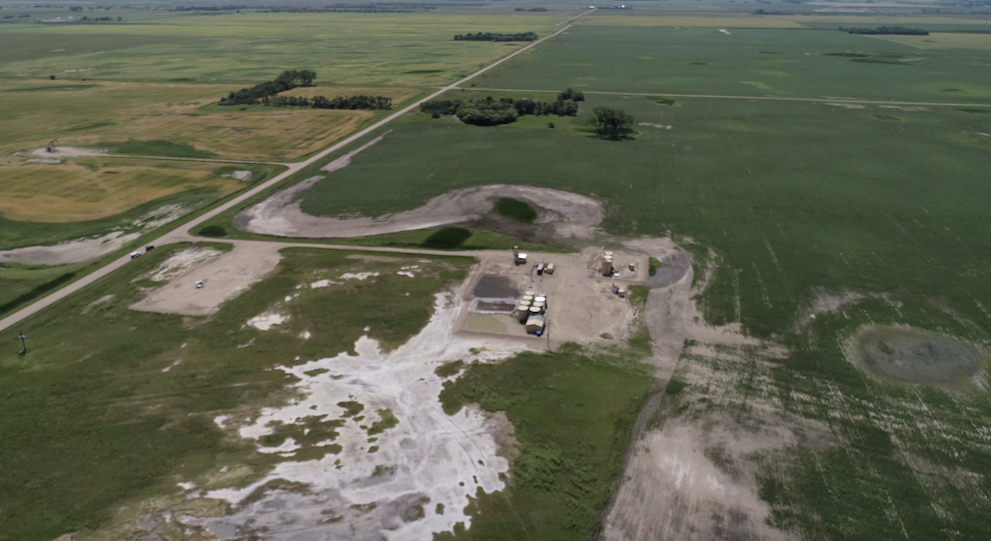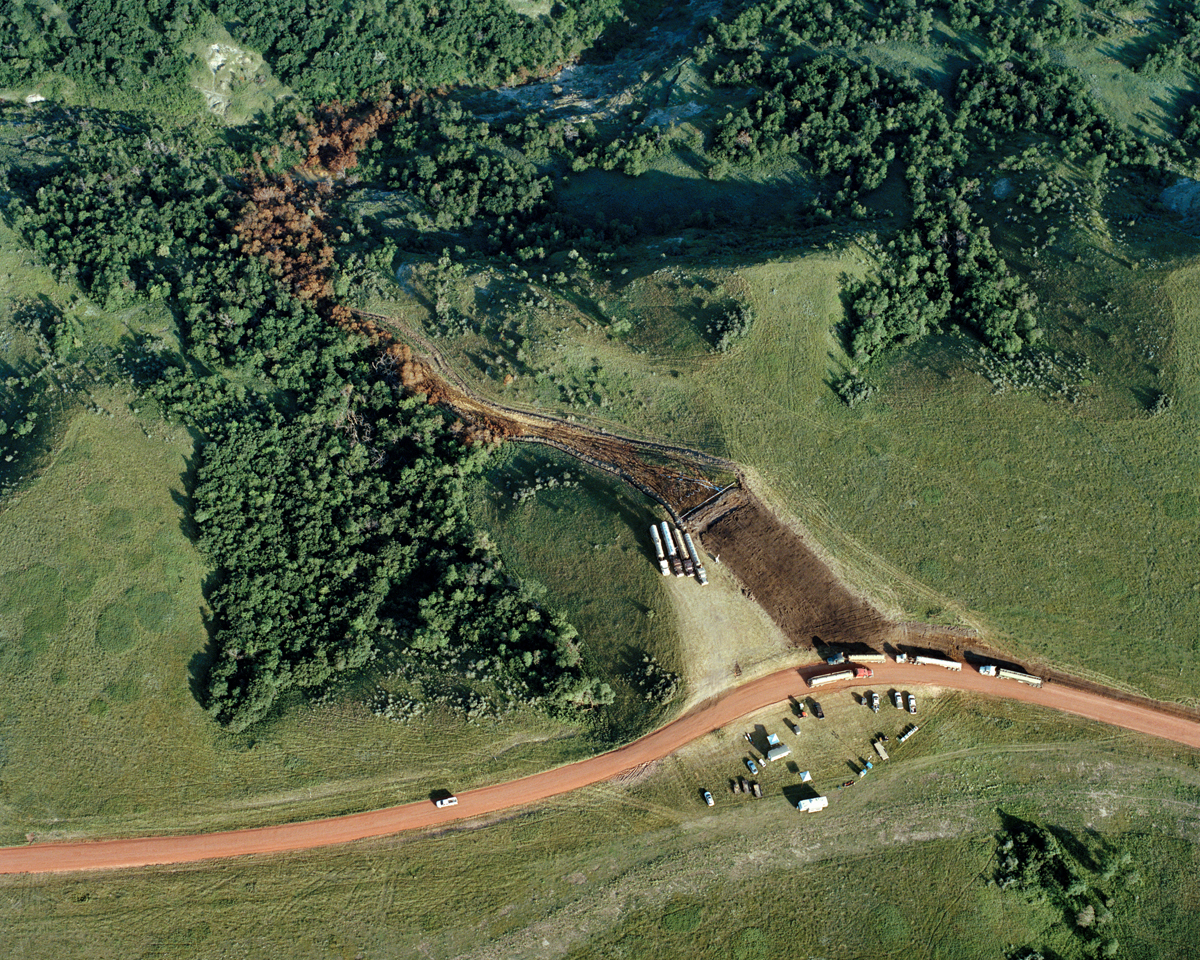In July 2015 workers at the Garden Creek I Gas Processing Plant, in Watford City, North Dakota, noticed a leak in a pipeline and reported a spill to the North Dakota Department of Health that remains officially listed as 10 gallons, the size of two bottled water delivery jugs.
But a whistle-blower has revealed to DeSmog the incident is actually on par with the 1989 Exxon Valdez oil spill in Alaska, which released roughly 11 million gallons of thick crude.
The Garden Creek spill “is in fact over 11 million gallons of condensate that leaked through a crack in a pipeline for over 3 years,” says the whistle-blower, who has expertise in environmental science but refused to be named or give other background information for fear of losing their job. They provided to DeSmog a document that details remediation efforts and verifies the spill’s monstrous size.
“Up to 5,500,000 gallons” of hydrocarbons have been removed from the site, the 2018 document states, “based upon an…estimate of approximately 11 million gallons released.”
Garden Creek is operated by the Oklahoma-based oil and gas service company, ONEOK Partners, and processes natural gas and natural gas liquids, also called natural gas condensate, brought to the facility via pipeline from Bakken wells.
Neither the National Oceanic and Atmospheric Administration (NOAA), which monitors coastal spills, nor the Environmental Protection Agency (EPA) could provide records to put the spill’s size in context, but according to available reports, if the 11-million-gallon figure is accurate, the Garden Creek spill appears to be among the largest recorded oil and gas industry spills in the history of the United States.
However, the American public is unaware, because the spill remains officially listed as just 10 gallons. That is despite the fact that a North Dakota regulator has acknowledged the spill was much larger, and even the official record, right after stating the spill was 10 gallons, notes that the area was “saturated with natural gas condensate of an unknown volume,” and thus may have been larger.
Scott Skokos, Executive Director of the Dakota Resource Council, an organization that works to protect North Dakota’s natural resources and family farms, questioned whether it was legal for the state to cover up or downplay spills.
“I have seen many instances where it appears spills are being covered up, and there appears to be a pattern of downplaying spills, which makes the narrative surrounding oil and gas development look rosy and makes the industry look better politically,” says Skokos. “If this pattern is as widespread as it seems, then we have a government that is conspiring to protect the oil industry. This is not only reckless and unethical, but also potentially illegal.”
“In my view,” Skokos added, “this is not looking out for the best interest of the state or the people who live in the state, it is only looking out for corporations. And these are not even corporate citizens of this state, they are corporate citizens of somewhere else.”
The Challenge of Oversight
Spills are pervasive in North Dakota’s oil industry and have been the focus of numerous media reports. “State regulators have often been unable — or unwilling — to compel energy companies to clean up their mess,” ProPublica reported in a 2012 investigation.
A 2015 Inside Energy article noted state reports “are riddled with inaccuracies and estimates” and cited a 2011 spill of oil and gas wastewater by a Texas-based company listed as 12,600 gallons but later determined to be at least two million gallons. An eight-year database of spills compiled by the New York Times in 2014 showed two spills of roughly one million gallons.
But no news agency has reported on any spill in North Dakota near the magnitude of Garden Creek.
Pumpjacks and flaring in McKenzie County, North Dakota, east of Arnegard and west of Watford City. Credit: Tim Evanson, CC BY–SA 2.0
Gas processing plants are sprawling industrial facilities and contain numerous pipes and towers that help clean and separate the stream of natural gas and natural gas liquids like ethane, butane, and propane carried in gathering pipelines that originate at wellheads.
The explosion of fracking across the U.S. and the booming development of America’s gas-rich shale plays have planted gas processing plants, which emit a near-continuous stream of greenhouse gases and carcinogens, from the Pittsburgh suburbs and Ohio’s Amish country to the high plains of Colorado and the badlands of North Dakota.
“There should be ongoing investigations of these facilities regularly,” says Emily Collins, Executive Director of Fair Shake, an Ohio-based nonprofit environmental law firm. But there isn’t.
“There is so much to keep track of for these regulators that spills, among other things, are lost in the mix,” says Collins. “The old formula of having inspections and investigations where you show up once a year clearly doesn’t work here, not with the pace, not with how many places are at issue all of the sudden. We are just not able to handle it all.”
Map of western North Dakota that includes well density (number of wells per 5 km radius), reported brine spills from 2007 to 2015 (red circles), and sampling sites of samples collected in July 2015 (green triangles). Credit: Lauer et al. 2016
Meanwhile, examination of the industry, its spills, and its placid regulators has made its way to the U.S. Congress. The Subcommittee on Energy and Mineral Resources of the House’s Natural Resource Committee has been holding hearings on the impacts of oil and gas development on local communities, landowners, taxpayers, and the environment.
In May, Collins testified before the subcommittee, along with 71-year-old North Dakota farmer Daryl Peterson. He shared harrowing stories about decades of spills of toxic oil and gas industry waste on his farmland, and the utter neglect of the issue by his state’s regulators.
“In my experience, regulators have been reluctant to enforce compliance,” Peterson told Congress. “And have minimized the impacts, rather than holding the oil companies accountable.”
North Dakota Regulator Disputes Size of Spill
On April 29, 2019, oversight of spills shifted from the North Dakota Department of Health to a new agency, the Department of Environmental Quality, but the state’s Spill Investigation Program Manager has remained Bill Suess.
“I know for a fact that Bill Suess was made aware of Garden Creek’s size in October of 2018 after a 3-year investigation was completed to assess size and scope,” the whistle-blower told DeSmog. “Bill and state staff were presented an updated version of the spill size…at the state Gold Seal building in a PowerPoint presentation.”
In a phone conversation with DeSmog in mid-July, Suess explained that he had never seen a document showing the spill’s size to be any number other than 10 gallons, and he rejected the fact that the spill was 11 million gallons.
“That would be by far the largest spill on land in U.S. history. I mean you are talking 261,000 barrels,” Suess said. “That would be significant, and I will guarantee you it is not that volume. I have received no documentation and I have no scientific evidence to show it is anywhere near that volume.”
Suess readily acknowledged that the officially listed spill size was too low. “We know it is significantly bigger than 10 gallons. We have known that since Day One,” Suess continued. Yet he defended the state’s decision to continue to list the spill as just 10 gallons.
“In North Dakota we do not regulate based on volume,” Suess added. “Whether we put a 10 there, a 100 there, a 1,000 there is not going to change our response to the spill, it is not going to change what the responsible party has to do, not going to change their remediation, it is not going to change anything other than your curiosity.”
Crestwood discovered a 1 million gallon brine spill from its Arrow pipeline on July 8, 2014. Located north of Mandaree, North Dakota, on the Fort Berthold Reservation. Mandaree is one of the six segments on Fort Berthold and where most Mandan and Hidatsa people live. Courtesy of Lisa DeVille
DeSmog presented details of the Garden Creek spill to North Dakota environmental attorney Fintan Dooley, who leads the North Dakota Salted Lands Council, an organization dedicated to remediating spills.
“You got a big fish hooked here,” he said. “This has all the signs of a civil conspiracy. If instead of 10, it was 110 or 1010 gallons, one could make the determination the original report was a mistake, but to leave uncorrected a mistake this big is not an accident, it smells of deception and deliberation and this is not the first incident of deceptive record-keeping in North Dakota — I think a good question to ask is, how many state officials are implicated in covering up this story?”
The North Dakota Century Code, which contains all state laws, covers perjury, falsification, and breach of duty in Chapter 12.1-11. Subsection 05, “Tampering with public records,” states the following:
“A person is guilty of an offense if he: a. Knowingly makes a false entry in or false alteration of a government record; or b. Knowingly, without lawful authority, destroys, conceals, removes, or otherwise impairs the verity or availability of a government record.”
The offense, “if committed by a public servant who has custody of the government record,” is a felony. The crime carries a possible five-year prison sentence.
DeSmog confronted Suess with this portion of the code, and asked him if he believed he, or someone, was guilty of falsifying government records. “No, I am not guilty, but if I changed that number I would be,” he said. “If I were to go in there and just change that [10 gallons] to a larger number that I don’t have any scientific evidence or documentation for, then I would be falsifying it.”
The environmental attorney Fintan Dooley does not buy that officials behaved appropriately. “There has been a lot of talk around the state capitol lately about official breach of public trust, and I am just wondering how far this practice of falsification of records will be allowed to go?” he said. “The whole thing can be prosecuted, and if this presents an opportunity to prosecute, I think that is just wonderful.” Any decisions regarding prosecution, he stresses, are up to a state attorney.
When asked exactly who would be charged with a crime, Dooley said, “If anyone is going to file a criminal charge, they must file it against an individual. If there was a whole series of people involved, the best practice would be to identify all of them.”
Spill Cleanup Amid Dakota Access Protests
Natural gas flares from a flare-head at the Orvis State well on the Evanson family farm in McKenzie County, North Dakota, west of Watford City. Credit: Tim Evanson, CC BY–SA 2.0
Garden Creek I became operational in January 2012. The project was applauded by state and industry officials for its ability to reduce the release of the prominent greenhouse gas methane in the oilfield by containing and processing that and other natural gas byproducts. Flaring, or burning, natural gas is common in the region’s oilfields.
“The completion of this facility is a positive step toward reducing flaring activities in North Dakota,” ONEOK president Terry Spencer told a Watford City newspaper in 2012. In 2015, at the time the spill was noticed, ONEOK was in the process of constructing a network of additional gas processing plants across the Bakken. In one industry press release, the company bragged of “better-than-expected plant performance at existing and planned processing plants.”
“There was motive to cover up the actual size of the spill to allow their infrastructure to be completed,” says the whistle-blower. Furthermore, by the summer of 2016, as the cleanup at Garden Creek I was moving along, protests against the construction of the Dakota Access pipeline (DAPL) at the Standing Rock Sioux Indian Reservation were in full swing. One major concern voiced by the tribe was that a spill could destroy farmland and contaminate drinking water for thousands of people.
On August 31, 2016, “Happy” American Horse from the Sicangu Nation locked himself to construction equipment as a direct action against the Dakota Access pipeline. Credit: Desiree Kane, CC BY 3.0
“Public outcry against gas collection could have threatened ONEOK’s expansion plans and might have stood in the way of the state’s flaring reduction goals,” says the whistle-blower. “It’s also possible that it could have further galvanized public opinion against the DAPL project. In short, it’s possible that the North Dakota Department of Health faced heavy pressure from both state and industry to keep this on the down low.”
David Glatt, Director of North Dakota’s Department of Environmental Quality, said, “The state makes public all spill reports it receives, so there is no under reporting by the state.” ONEOK has not responded to DeSmog’s questions on this incident. DeSmog has filed an open records request with the State of North Dakota for additional information and details related to the Garden Creek I spill.
In July, Suess told DeSmog, “Remediation is still ongoing. It is going to be a slow process, it will be a few years, I think.” Suess said he was planning to revisit the spill site but did not expect anything he found there would lead him to alter the officially recorded spill size. “I have a schedule to go out there later this month, but I still probably wouldn’t change that 10-gallon number because I still won’t have an accurate number,” he said.
North Dakotans Grapple With Impacts of Spills
In May, just as North Dakota’s planting season was beginning, I met with several North Dakota residents whose farms or communities had been marred by oil and gas industry spills, including the land of farmer Daryl Peterson, whose 2,500 acres of grains, soybeans, and corn have been contaminated by more than a dozen spills of brine.
This oil and gas waste product is loaded with salt and also contains toxic heavy metals and radioactivity. Peterson pointed to dead zones on his land that are unfit for crops though still fit for government taxes. The spills have also tainted his groundwater.
Daryl Peterson’s North Dakota farm has suffered from more than a dozen oil and gas industry brine spills. Courtesy of Daryl Peterson
“State regulators declare most spills are cleaned up to EPA standards and land productivity is restored but very often this has not been the case,” said Peterson, who, together with his wife Christine, has farmed this land in Bottineau County, near the Canadian border, for more than 40 years.
“The oil industry controls politics in North Dakota and long-term consequences to our precious land, air, and water resources are being ignored with this gold rush mentality. With the prospect of 40,000 more wells in North Dakota, the future of our bountiful agriculture state is in great jeopardy,” said Peterson.
Suess defended his agency’s methods. “What I believe the North Dakota public wants to know is not how big is it, but is this spill a risk to me,” he said. “Personally, I have actually been told by others that we are one of the most transparent agencies out there. My boss is the North Dakota taxpayer, and my door is always open, any citizen can walk in at any time and talk to me.”
However, other North Dakota residents dealing with spills strongly disagree. In May DeSmog also toured spills on the Fort Berthold Indian Reservation, in the heart of the Bakken oil boom in western North Dakota, with Lisa DeVille and her husband Walter DeVille Sr. The couple lives in the community of Mandaree and helps lead an environmental advocacy group called Fort Berthold Protectors of Water & Earth Rights, or POWER.
“You can see the earth slowly dying,” said Lisa, who has two master’s degrees in business and returned to school to get a bachelor’s* degree in environmental science so she could better monitor all the spills and contamination on her land and advocate for her community.
“Every day we have a spill,” she said. “Whether it is frac sand spilled, trucks that stall out and drop their oil on roads, trucks wrecking on the road and spilling oil and gas waste product, or our invisible spill, the methane released into the air from flaring and venting.”
Aerial view of a 1 million gallon brine spill from Crestwood’s Arrow pipeline on July 8, 2014. Located north of Mandaree, North Dakota, on the Fort Berthold Reservation. Mandaree is one of the six segments on Fort Berthold and where most Mandan and Hidatsa peoples live. Photo credit: Sarah Christianson
“The North Dakota Spill Investigation Program Manager can say that his door is open, but North Dakota is protecting industry, not people, and it is upsetting to me,” Lisa added.
“My people — the Mandan, Hidatsa, and Arikara Nation — have been here for centuries, there have been many broken promises, and they have been lied to and are still being lied to about all this oil and gas contamination. No one knows the amount of spills on Fort Berthold because industry will lie to our tribal leaders. Also, there is no data for the public to see. There are no studies, research, or analysis to create laws or codes for environmental justice.”
In July 2014, one million gallons of oil and gas waste spilled from a pipeline and into a ravine that drains into the tribe’s main reservoir for drinking water. In a 2016 paper, Duke University researchers, including geochemist Avner Vengosh, revealed the spill, as well as several others in the Bakken, had laced the land with heavy metals and radioactivity.
When asked in May 2019 if he was aware of this research, Glatt, director of the North Dakota Department of Environmental Quality, said he questioned Vengosh’s “initial premise” and believed the researchers were “looking for the worst case scenario.”
“I haven’t seen his report; I just didn’t even know it was out there,” said Glatt. “I knew he was in the state. This is the first time I hear that he wrote a report.”
‘Lack of Accountability’
As lawsuits against the oil and gas industry for climate impacts continue and a growing web of grassroots groups spotlight the industry’s wide arc of pollution, the uncovering of the oil and gas industry’s vast closet of toxic skeletons seems inevitable.
“Ultimately I am fed up with the rushed drilling programs and the lack of accountability when it comes to environmental impacts,” says the whistle-blower. “I am also disgusted with how state officials and city council members view these threats and deem it acceptable to potentially harm human health.”
Why, the whistle-blower added, “are we shielding the truth from public scrutiny?”
*Updated 8/20/19: This story has been updated to correct Lisa DeVille’s degree in environmental science, which is a bachelor’s, not a master’s.
Main image: The Exxon Valdez. Credit: National Oceanic and Atmospheric Administration, public domain
Subscribe to our newsletter
Stay up to date with DeSmog news and alerts


